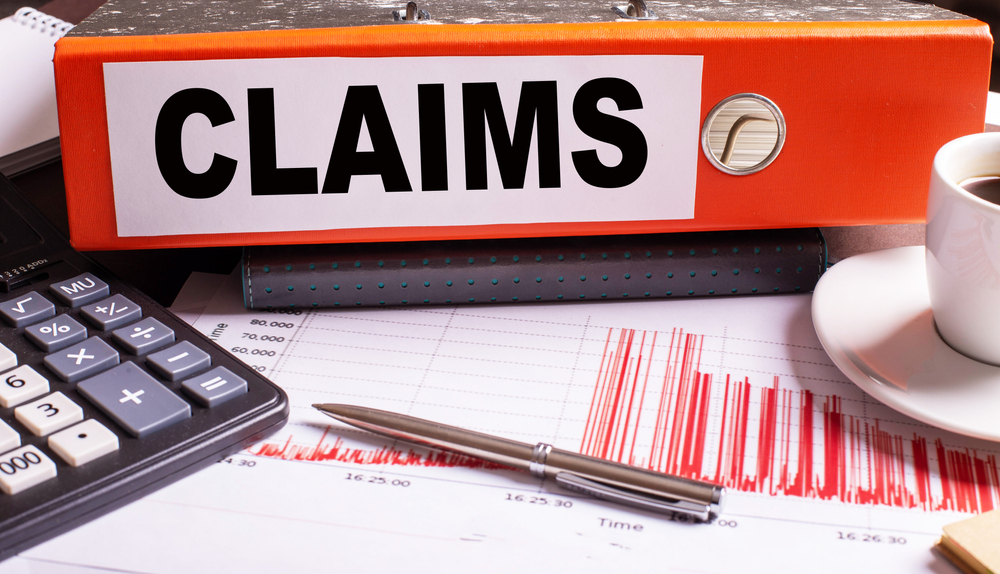To prove a utility company was negligent in causing a California wildfire, you must show they failed to act with reasonable care and that this failure directly caused your damages.
This involves gathering evidence of poorly maintained equipment, a failure to de-energize power lines during high-risk conditions, or improper vegetation management around their infrastructure. This process is separate from and goes far beyond your insurance claim.
While your insurance policy covers a portion of your losses, a negligence claim holds the corporation accountable for the full scope of your financial and personal damages, including things insurance will not cover. The evidence required is highly technical and is usually in the possession of the utility company itself, making legal action necessary to uncover it.
If you have questions about how a utility company’s actions may have led to your property loss in a California wildfire, call the Bernheim Law Firm for a no-cost consultation at (800) WILDFIRE.
Key Takeaways for Proving Corporate Negligence in a Wildfire Case
- A lawsuit pursues compensation beyond your insurance policy limits to cover the full cost of rebuilding, emotional distress, and other damages insurance excludes.
- Proving negligence requires obtaining internal corporate documents. Legal action is necessary to secure maintenance logs, vegetation management records, and internal communications that show a company failed to operate safely.
- Never use a utility company's online claims portal without legal counsel. These portals may limit your financial recovery and may require you to sign away your right to future legal action.
Why Your Insurance Policy Is Only the Starting Point

After a fire, your first call is likely to your insurance company. You pay your premiums, and you expect your policy to cover your losses and help you rebuild. Many people, however, quickly discover that their homeowner's insurance is not enough.
Here’s what policies frequently fail to cover in full:
- Underinsured Limits: Your policy limit may not be enough to cover the current cost of rebuilding, especially with post-disaster price spikes in labor and materials.
- Personal Property Gaps: Most policies place strict limits on valuables like art, jewelry, and electronics.
- Landscaping and Property Value: Insurance rarely covers the full cost of restoring trees, soil, and outdoor structures, which dramatically reduces your property's value.
- Emotional Distress and Inconvenience: Insurance does not compensate you for the trauma, anxiety, or the complete disruption to your family’s life.
- Lost Income: If you ran a business from your home or the fire impacted your ability to work, insurance typically does not cover that lost income.
A direct legal claim against the negligent corporation is designed to fill these gaps. The goal is to secure compensation that makes you whole again—covering not just what was lost, but also the human cost of the disaster. This is the difference between what insurance pays and what you are truly owed.
What Does "Corporate Negligence" Mean in a Wildfire Case?
The term "negligence" is a legal concept that means a company failed to use the level of care that a reasonably prudent company would have used in the same situation.
In California, utility companies have a legal "duty of care" to operate their equipment safely to avoid foreseeable harm to the public. To prove they breached this duty, we establish four key elements:
- Duty: The utility company had a responsibility to maintain its equipment safely. This is established by state regulations and industry standards.
- Breach: The company failed to meet that responsibility. For example, they did not clear brush from around a power line as required by law or failed to replace aging equipment.
- Causation: This breach directly caused the wildfire and, in turn, your damages. We work to prove their faulty equipment was the "proximate cause" of the fire.
- Damages: You suffered actual, measurable losses as a result, such as a destroyed home, lost property, or emotional trauma.
California law also provides a claim for inverse condemnation. Article I, Section 19 of the California Constitution holds a public utility strictly liable for damage its equipment causes to private property while providing a public service, such as delivering electricity. This means you do not have to prove the utility’s carelessness to establish its financial responsibility for your losses.
How We Build a Case to Prove a Utility Company Caused the Fire
Step 1: Independent Fire Cause Investigation
We do not rely on the official reports from CAL FIRE or the utility company alone. These reports serve as a starting point, but they are not the final word. We hire independent fire investigators, forestry experts, and electrical engineers to analyze the burn pattern, ignition point, weather data, and physical evidence from the scene. This independent analysis is foundational to building a case that stands up to the scrutiny of a courtroom.
Step 2: Securing Evidence from the Corporation
Through the legal discovery process, we compel the utility to turn over internal documents they would not otherwise release. This is where the story of negligence typically comes to light. This evidence includes:
- Maintenance and Inspection Logs: We look for patterns of deferred maintenance, overdue repairs, or records of known problems with specific pieces of equipment in the area where the fire started.
- Vegetation Management Records: We check if the company complied with state laws requiring minimum clearance between power lines and trees. These records reveal if they cut corners on tree trimming to save money.
- Internal Communications: Emails, text messages, and internal memos reveal if the company's management was aware of the risks in a certain area but failed to act.
- Employee Work Orders: These documents show what repairs were ordered, what was completed, and, most importantly, what was ignored or delayed.
Step 3: Expert Witness Testimony
Explaining complex technical failures to a judge and jury requires credible, authoritative voices. We work with a network of respected experts to explain how the utility failed and how those failures caused the fire.
- Utility Operations Experts testify on industry standards for equipment maintenance, grid management, and safety protocols.
- Meteorologists confirm that weather conditions, such as Red Flag Warnings, made it unsafe to keep power lines energized and that the utility should have known the risks.
- Economists and Appraisers accurately calculate the full extent of your financial losses, including diminished property value, lost business income, and future costs associated with your recovery.
A Warning: Why You Should Not Use a Utility Company's Online Claims Portal

After a major fire, at-fault companies like PG&E and SCE will sometimes set up online portals for victims to apply for compensation. They present these as a fast and easy way to get help. They are anything but.
These portals are a detour designed to limit your recovery. These programs are designed by the corporation and its insurance carriers. Their goal is to resolve claims for the lowest amount possible and, in many cases, to get you to sign away your legal rights without understanding the full consequences.
When you submit a claim through their portal:
- You Give Up Control: You are providing them with information on their terms, without legal representation to protect your interests. They control the process and the narrative.
- You May Sign Away Your Rights: The fine print in these online agreements includes a waiver that prevents you from taking any further legal action, even if you discover your losses are far greater than you initially thought.
- The Offers Are Typically Too Low: The compensation offered is typically far less than what you could secure through a proper legal claim, which accounts for the full range of damages we discussed earlier, including emotional distress and long-term financial harm.
Instead of using their portal, do this: Call our firm.
We will evaluate your situation and determine the correct legal path forward. Filing a lawsuit preserves your rights and puts you in a position of strength, ensuring you are pursuing the maximum compensation available under the law. Don't let a corporation, whose #1 duty is to its shareholders, dictate the terms of your recovery.
What Compensation Is Recovered in a Wildfire Negligence Lawsuit?
The purpose of a lawsuit is to recover compensation for all of your losses, not just the ones covered by an insurance policy. California law allows victims of corporate negligence to pursue several types of damages.
Economic Damages
These are for tangible financial losses with a clear dollar amount attached. They include:
- Property Damage: The full cost to repair or rebuild your home and other structures at current market rates.
- Personal Belongings: The replacement value of everything you lost, from furniture and clothing to family heirlooms.
- Alternative Living Expenses: Costs for temporary housing, food, and other necessities that exceed your insurance coverage.
- Lost Wages or Business Income: Income you were unable to earn because your home, business, or ability to work was impacted by the fire.
- Evacuation Costs: Expenses related to leaving your home, such as hotel stays, gas, and food.
- Damage to Trees and Landscaping: The cost to restore your land, which is a significant portion of your property's value.
Non-Economic Damages
These compensate for the human cost of the fire—the intangible losses that don't have a simple price tag. They include:
- Emotional Distress: For the anxiety, grief, sleep loss, and trauma caused by losing your home and sense of security.
- Inconvenience and Disruption to Daily Life: For the immense hassle of displacement and rebuilding your life from scratch.
- Loss of Enjoyment of Your Property: Compensation for the loss of your ability to use and enjoy your home as you once did.
Exemplary (Punitive) Damages
If evidence shows a utility's conduct involved a willful act or a conscious disregard for public safety, we may pursue exemplary (or punitive) damages under California Public Utilities Code §2106. The law allows for these damages to punish the wrongdoer and deter similar conduct.
Frequently Asked Questions About California Wildfire Lawsuits
How much does it cost to hire your firm?
We handle these cases on a contingency fee basis. This means you pay no upfront fees. We only receive a fee if we successfully recover compensation for you.
How long do I have to file a lawsuit?
The statute of limitations for property damage in California is typically three years from the date the damage occurred. However, the timeline is complicated, and it is important to act promptly to preserve evidence and protect your rights.
What if I was a renter and not a homeowner?
Renters also file claims. You have a right to be compensated for your lost personal property, displacement costs, and any emotional distress you suffered. Your landlord's insurance covers the structure, but a claim against the utility company covers your personal losses.
What if I've already accepted an insurance settlement?
You may still pursue a claim against the at-fault corporation. An insurance settlement covers your contractual claim with your insurer; it does not release the negligent party from their liability for the full scope of your damages.
I live in Los Angeles County. Does your firm handle cases from the recent SCE fires?
Yes. Our practice focuses on holding utility companies accountable for wildfire damage throughout California, including the recent fires in Southern California allegedly caused by Southern California Edison equipment.
How is a claim for inverse condemnation different from negligence?
A negligence claim focuses on proving the utility company acted carelessly—for example, by failing to maintain its equipment.
An inverse condemnation claim, however, does not require you to prove carelessness. You only need to show that the utility’s equipment, while being used for a public purpose, was a substantial cause of the damage to your property.
Both avenues are often pursued together to build the strongest possible case for compensation.
What kind of evidence should I preserve after a wildfire?
If it is safe to do so, take extensive photos and videos of the damage to your home, personal belongings, and land before anything is moved or cleared.
Create a detailed list of all personal property you lost, including its estimated value and age. Keep all receipts for any expenses you incur after the fire, such as for temporary housing, clothing, food, and gas.
Do not dispose of any damaged items until your insurance adjuster and our investigators have had a chance to inspect them.
What if CAL FIRE’s report blames something other than the utility company?
Official reports from agencies like CAL FIRE are an important piece of evidence, but they are not the final word. We conduct our own independent investigation with qualified fire scientists and engineers.
In many instances, a deeper investigation uncovers evidence of equipment failure or negligent vegetation management that an initial government report may have missed. We use this independent analysis to establish the utility's true role in causing the fire.
Together, Let’s Hold Them Accountable

While utility companies have teams of lawyers working to minimize their financial responsibility, our firm is dedicated to ensuring your voice is heard and your losses are fully accounted for. The sooner we begin investigating and gathering evidence, the stronger your case will be.
To discuss your situation and learn how we can help you, call the Bernheim Law Firm today at (800) WILDFIRE.